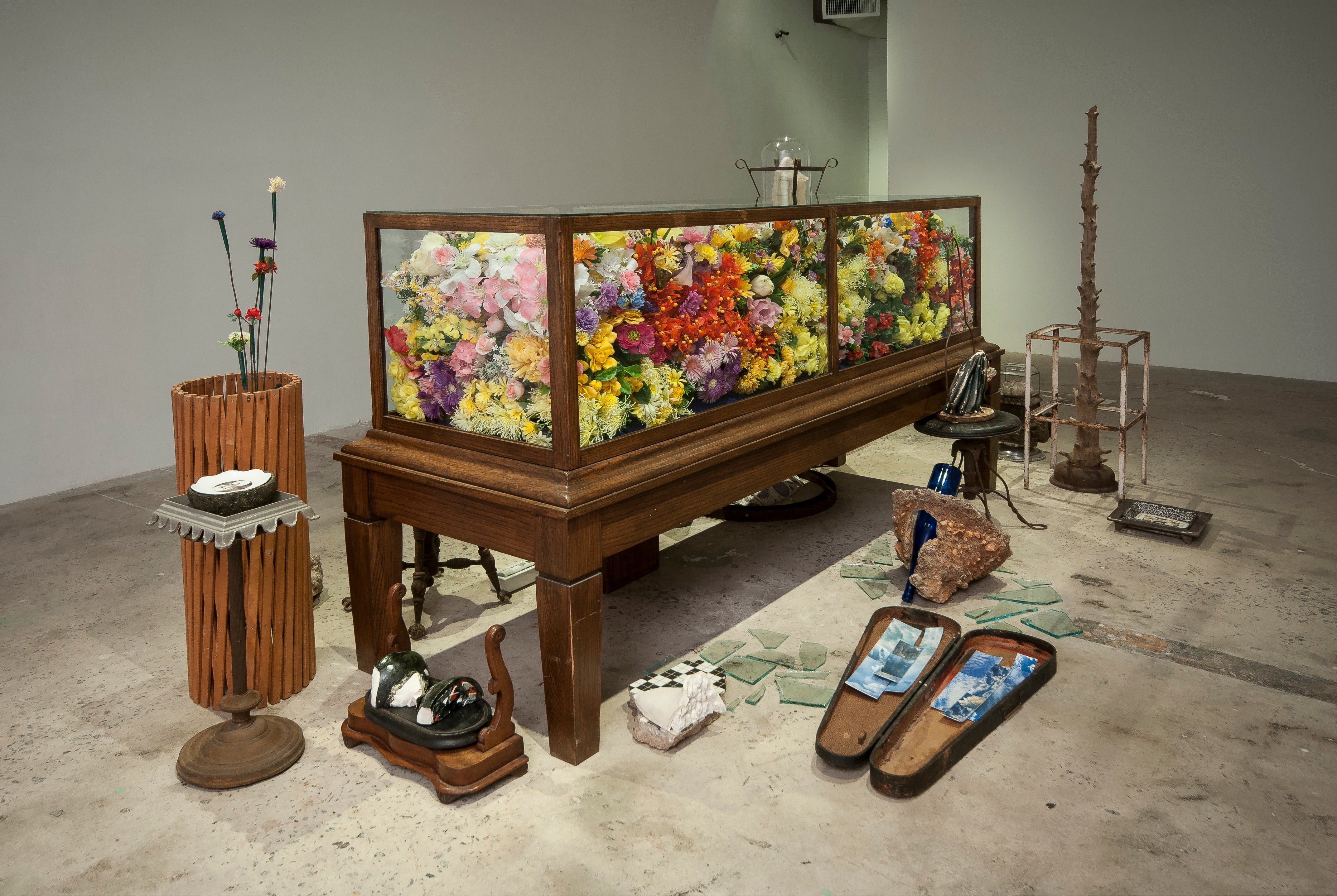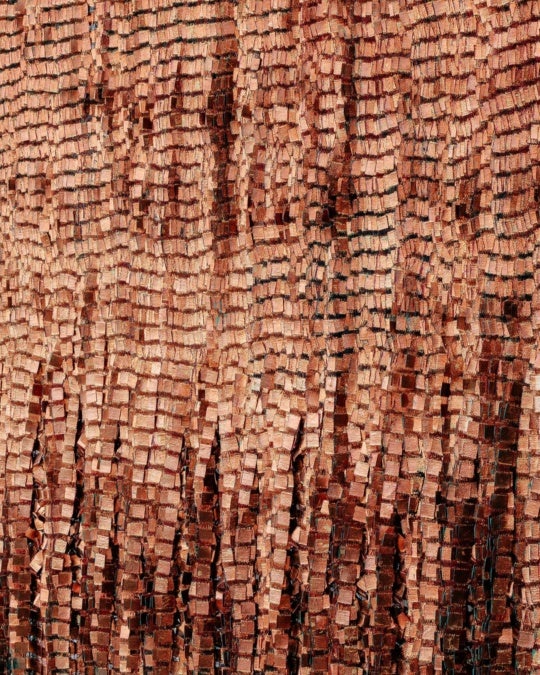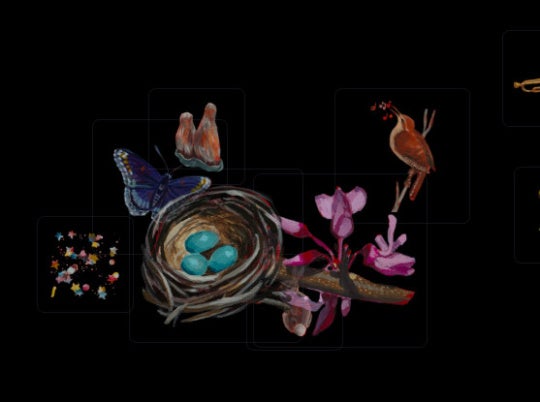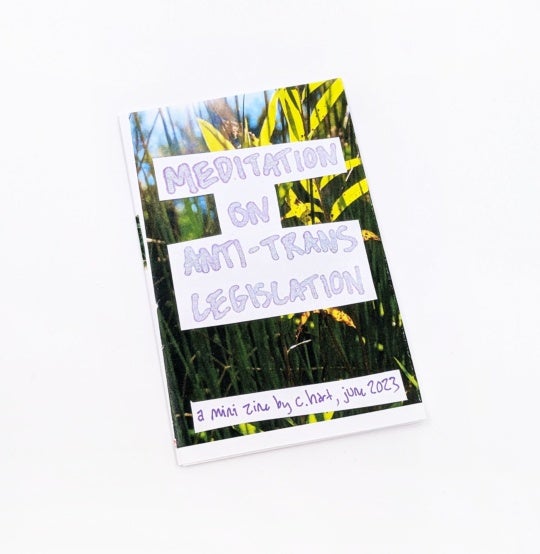We kick off our Best of 2017 series with a roundup of favorite exhibitions from around the South, as well as memorable exhibitions our contributors saw in cities other than their own.
Check out the rest of our Best of 2017 series: Best Exhibitions, Cultural Experiences, News Stories, and Movers and Shakers, Favorite Reads, News Stories, and Movers and Shakers.
Favorite Exhibitions in the South


Anne Lambert Tracht, art consultant: My favorite exhibitions of 2017 were all at MOCA GA! Mario Petrirena’s retrospective early in 2017 was an incredible reminder of the breadth and importance of Mario’s work. As well, the Gathered show this summer was a fresh look at the amazing talent (both emerging and established) that we have here in Georgia. Finally, Craig Drennen’s Working Artist Project exhibition that is on view right now absolutely blew me away. It’s a must see!
William Downs, artist and lecturer at Georgia State University: Krista Clark and Lauren Peterson at Kibbee Gallery. Shows curated by Karen Tauches at Swan Coach House and Sarah Higgins at the Zuckerman.



Carolyn Jobe, cofounder of Locate Arts: Untitled (More Heat III) by Brooklyn artist Paul Anthony Smith at mild climate, Aug. 5-Sept. 23.
Brian Jobe, cofounder of Locate Arts: “You Can’t Make Love to Concrete” at COOP Gallery, Aug. 5-25, curated by Jennifer Baker, and featuring works by Marie Bannerot McInerney, Catalina Ouyang, and Bret Schneider.


Chris Vitiello, Poet & Art Critic: My favorite show in Durham was the Subverbal Collective’s Mixtape at The Carrack in August. Subverbal comprises six women artists who’ve recently finished MFAs at UNC-Chapel Hill (Erin Canady, Joy Meyer, Leah Smith, Emily Smith, Sydney Steen, and Allison Tierney), and this show extended the idea of the mixtape to pair a collective member with another artist to work not in collaboration but in response to each other. It’s tempting to draw conclusions about this group of artists from the work in this exhibition as a whole, although they’re all making distinctive, unique bodies of work. They are comfortable with transitional and transformational forms as well as hybrid and chimerical objects, even if changes and recombinations render them unidentifiable. Much of the work in this show was untitled, as if it resisted description or functioned outside of it. This is also physicalized—work is stopped between the second and third dimension. A stretched textile work by Joy Meyers was both sculptural and a painting; Allison Tierney combined a patterned panel with a fence like structure that leans off of the wall; Vanessa Murray’s oil and polymer on panel works had built-up surfaces that offer distressed apertures or wounds. As soon as you name these facets or qualities, a different name seems to present itself in them.
This work isn’t cautious but the artists seem concerned with safety and safe places. Wayne Marcelli’s grid of branches suggested a provisional shelter, Kimberly English’s hanging sculpture of bedding and clothesline seemed as provisional but more desperate. Erin Canady’s grid work made by ice cubes infused with graphite melting on a sheet of paper made an image of both disappearance and liberation.
These artists are worried because they don’t know what’s going to happen next. They don’t know what landscape they’ll be walking in tomorrow, and they don’t know what kind of person they’ll need to be to walk safely through it. Their expressions of this anxiety, however, are empowering and instructive.
Subverbal also had a smaller show in May at Raleigh’s Visual Art Exchange (The Lived Body) that was terrific.


Rachel Reese, associate curator of modern and contemporary art at Telfair Museums: The 1978 Frontier Classic performance by Work and Play productions at Non-Fiction Gallery, as well as Hank Willis Thomas’s “Blind Memory” and “Freedom Isn’t Always Beautiful,” at the SCAD Museum of Art.


Jordan Amirkhani, writer and Professor at UT Chattanooga: The great variety of artists, genres, and issues represented in “Our America: The Latino Presence in American Art” at the Hunter Museum of American Art was a highlight for me. Organized originally by the Smithsonian American Art Museum, this exhibition was a wonderful way to open the institution’s doors to Chattanooga’s growing Latin American community, celebrate the astounding cultural achievements of these artists, and reflect on the complicated experiences of migrant and immigrant communities in American history, past and present.


Dwayne Butcher, art critic: “Desert to Delta: Contemporary Art from Saudi Arabia” at the Art Museum at the University of Memphis (AMUM), October 8, 2017-January 6, 2018.
Though we have a tendency to not think or act like it, we live in a global world. The Saudi artists in this exhibition are addressing issues that the artists in Memphis, Atlanta, and New Orleans are dealing with: environmental degradation, economic disparity, urban growth and loss of traditional culture, social inequality of women and minorities, and escalating tensions between and among ideologies.
“Desert to Delta” is one of ten separately curated exhibitions being shown between 2016 and 2018 in Houston, Aspen, San Francisco, Los Angeles, Detroit, Salt Lake City, Washington, D.C., Brooklyn, Memphis, and Lewiston, Maine.


Brett Levine, Writer and Critic: Rasheed Araeen’s critical journal Third Text may have been “decolonizing the canon” since 1978, but these ideas came to the fore at the Birmingham Museum of Art in Wassan Al-Khudhairi’s exhibition “Third Space/Shifting Conversations about Contemporary Art.” This two-year project commenced in January 2017. “Shifting Conversations” is a step the right direction, and the recurring changes to the exhibition, with new works being added every six months, make return visits worthwhile. [Read our review here.] On a smaller scale, the Akiko Mashima exhibition at beta pictoris gallery proved that minimalism may be a formal language, but it does not have to be a rigid, overarching structure. Mashima’s forays into wood read like records of the handmade, making the very ideas of difference and repetitions seem as if they were conceived for her.

What was your favorite exhibition anywhere (gallery and/or museum)?
Anne Lambert Tracht: I really enjoyed the Katharina Grosse exhibition at Gagosian in New York. Her work — both her paintings and her sculpture — are stunning.

William Downs: Gut Feelings at the Zuckerman Museum of Art in Kennesaw.

Brian Jobe: Kevin Everson solo exhibition at UT Downtown Gallery (Knoxville), Mar. 3-31


Haynes Riley: Favorites are hard, but memorable is easier. It has been a long year, and this list reflects that:
Nancy Lupo All Always Already at Kristina Kite Gallery
Agnieszka Polska Little Planet at Overduin & Co.
Jason Rhoades Installations, 1994–2006 at Hauser & Wirth
Myths of the Marble at ICA Philadelphia
Kasia Fudakowski BAD BASKET at Lodos
Mickalene Thomas Waiting on a Prime-Time Star at Newcomb Art Museum
Rei Kawakubo/Comme des Garçons at Metropolitan Museum of Art
Patricia Treib Interstices at Bureau
Rachel Harrison at Greene Naftali
Anicka Yi at the Guggenheim
Invisible Man at Martos Gallery
Ungestalt at Kunsthalle Basel
The Absent Museum at WIELS
Wolfgang Tillmans at Fondation Beyeler
Elmgreen & Dragset at Haus Lange and Haus Esters
Alexandra Bircken Stretch Museum Abteiberg
SI SEDES NON IS curated by Milovan Farronato at The Breeder
Jimmie Durham At the Center of the World at the Hammer Museum and the Walker Art Center
Yui Yaegashi at Shane Campbell Gallery
Blue Black curated by Glenn Ligon at Pulitzer Arts Foundation

Chris Vitiello: I didn’t do much traveling this year but did get to spend a day in Robert Rauschenberg: Among Friends at MoMA. How can you not love that show? I’d never seen Mud Muse before and just hung out in its room and watched people experience it for a long time—reactions of joy and confusion and dismissal and inspiration. It was also great to invest the time in all the video of 9 Evenings: Theatre and Engineering, which made me realize that I’m carrying around a perpetually unfulfilled craving for provocative, unexpected, wild artwork. The idea of the show—a retrospective through collaboration and cooperation, rather than as a deification of an individual artist—made me see that craving as one for a kind of community that sits up talking in the living room until 2 rather than just drinking some box wine and heading home before the gallery closes at 9. That’s a bit romantic but, then again, artists here are getting way too much sleep. This show has stayed with me as I’ve been looking deeper into how arts communities here in NC organize and function.

Rachel Reese: We Wanted a Revolution: Black Radical Women 1965–85 at the Brooklyn Museum.

Jordan Amirkhani: Beverly Buchanan—Ruins and Rituals at the Spelman College Museum of Fine Art in Atlanta was one of the best exhibitions that I saw last year. Not only was the curatorial presentation thoughtful and strong, but I was struck by how timely and urgent Buchanan’s work resonates in our current political moment. As we continue to struggle for the equal protection of women, persons of color, and minorities of all kinds under the law, Buchanan’s practice reminds us that protest and resistance to power is a way of life—it must constantly unfold and regenerate in our work and relationships with others, and can be subtle or overt.

Dwayne Butcher: Ambreen Butt, “What is Left of Me,” Dallas Contemporary, Dallas, Texas, April 8-August 27, 2017
I think one of the reasons the “Desert to Delta” exhibition resonated with me [see above] is because I am still thinking about Ambreen Butt’s exhibition at Dallas Contemporary. The sparsely installed work, specifically in the central gallery, consisted of three large reliefs that resemble Islamic tiled panels. Each of these works are created by resin casts of locks, keys, and coat hooks in shades of blue, red, green, and yellow. This exhibition made me think about my own work in a completely different way, specifically in the modular way in which I create and install the pieces.

Brett Levine: Fashion took center stage in 2017. My year began with the National Gallery of Victoria’s Viktor and Rolf: Fashion Artists, where an automaton-driven fashion show gave a new meaning to mannequins. The year felt like it ended with Rei Kawakubo/Comme des Garcons Art of the In-Between, where the architecture and exhibition design were as thoughtfully conceived as the couture. Kawakubo proves that fashion really is about construction. The 2017 Whitney Biennial may have received attention for many of the wrong reasons, but it was incredibly strong and engaging. Samara Golden’s The Meat Grinder’s Iron Clothes has been written about and spoken of at length already, but standing in front of the exhibition and seeing cars pass below on the West Side Highway was beautiful yet vertigo-inducing.





